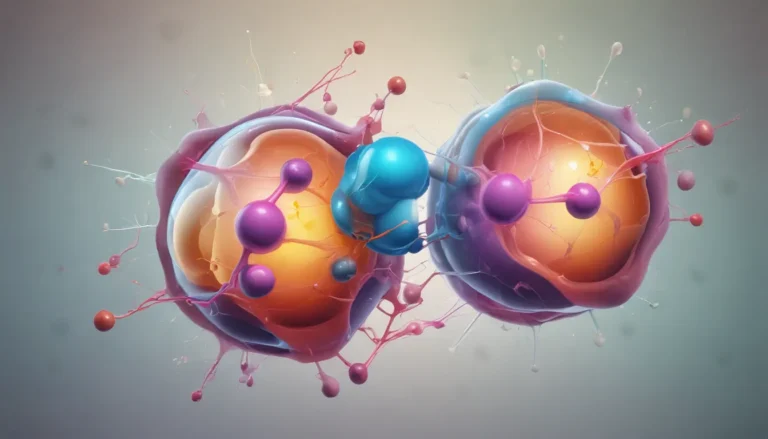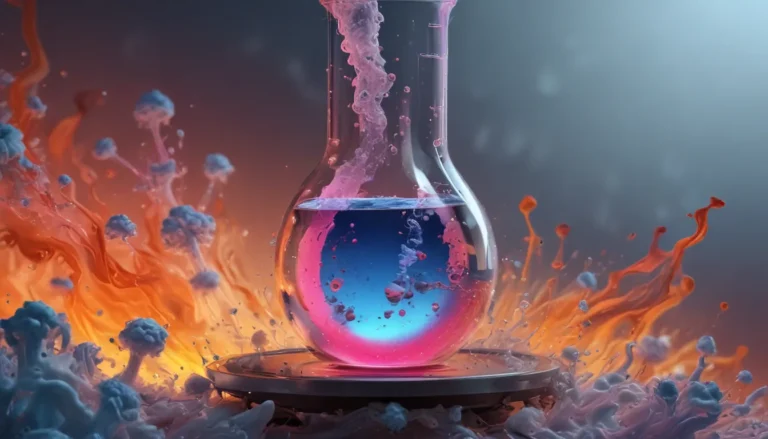A Note About Images: The images used in our articles are for illustration purposes only and may not exactly match the content. They are meant to engage readers, but the text should be relied upon for accurate information.
Are you ready to embark on a journey through the intriguing world of Avogadro’s Law? Named after the renowned Italian scientist Amedeo Avogadro, this fundamental principle in chemistry holds the key to unraveling the mysteries of gas behavior and stoichiometry. Join us as we uncover 14 surprising facts about Avogadro’s Law that will not only expand your knowledge but also deepen your appreciation for this cornerstone of chemistry.
Exploring the Essence of Avogadro’s Law
- Avogadro’s Law establishes that the volume of a gas is directly proportional to the number of gas molecules, serving as a vital tool in understanding gas behavior and stoichiometry in chemistry.
- Avogadro’s constant, approximately 6.022 × 10^23 particles per mole, acts as a bridge between the macroscopic world of grams and liters and the microscopic realm of atoms and molecules, revolutionizing our comprehension of gases.
The Core Principles of Avogadro’s Law
Avogadro’s Law dictates that equal volumes of gases, at the same temperature and pressure, contain an equal number of molecules. This fundamental concept implies that the volume of a gas changes in direct proportion to the amount of gas present. When the number of gas molecules doubles, the volume also doubles, provided that temperature and pressure remain constant.
Unveiling Avogadro’s Constant
Avogadro’s constant, often denoted as “NA” or “L,” symbolizes the number of particles in one mole of a substance. With an approximate value of 6.022 × 10^23 particles per mole, this constant serves as a crucial link between the realms of grams and liters and atoms and molecules, facilitating a deeper understanding of the composition of matter.
The Ideal Gas Law and Avogadro’s Law
Avogadro’s Law emerges as a consequence of the ideal gas law, a powerful equation that amalgamates Boyle’s Law, Charles’s Law, and Avogadro’s Law. This comprehensive law correlates the pressure, volume, temperature, and number of molecules in a gas sample, offering valuable insights into the behavior of gases.
Practical Applications of Avogadro’s Law
- Avogadro’s Law plays a pivotal role in calculating molar volume, enabling scientists to determine the volume occupied by one mole of gas at specific temperature and pressure settings.
- It serves as a guiding principle in stoichiometry, aiding chemists in establishing the ratios of reactants and products involved in chemical reactions.
Unraveling the Mysteries of Gas Behavior
By shedding light on gas diffusion, effusion, and the relationship between gas properties such as density and molar mass, Avogadro’s Law provides a profound understanding of the behavior of gases. It elucidates the dynamics of gas molecules and their interactions under various conditions.
Embracing the Concept of the Mole
At the heart of Avogadro’s Law lies the concept of the mole, a fundamental unit in chemistry representing a specific number of atoms, ions, or molecules. This pivotal concept connects the macroscopic property of gas volume to the microscopic realm of the mole, fostering a deeper understanding of chemical phenomena.
The Role of Avogadro’s Law in Molar Mass Determination
Avogadro’s Law offers a gateway to determining the molar mass of a gas by measuring its volume and applying the principles of ideal gases. This practical application allows scientists to quantify the mass of a gas sample in relation to the number of moles present.
Illuminating Gas Mixtures with Avogadro’s Law
When confronted with gas mixtures, Avogadro’s Law empowers scientists to discern the partial pressures and volumes of each gas component, as well as the total pressure and volume of the mixture. This invaluable tool guides researchers in unraveling the complexities of gas interactions.
The Historical Legacy of Avogadro’s Law
Formulated by the visionary Italian scientist Amedeo Avogadro in 1811, Avogadro’s Law stands as a revolutionary milestone in the realm of chemistry. By providing a conceptual framework to comprehend gas behavior, this law continues to shape our understanding of gases and their intrinsic properties.
In Conclusion
Avogadro’s Law emerges as a beacon of light, illuminating the intricate tapestry of chemical phenomena. Through our exploration of these 14 astounding facts, we have delved into the depths of this fundamental principle, unraveling its significance and practical implications in the world of chemistry. As we bask in the brilliance of Avogadro’s Law, let us embrace its enduring legacy and its role in shaping the landscape of scientific discovery.
FAQs
-
What is Avogadro’s Law?
Avogadro’s Law dictates that, at a constant temperature and pressure, equal volumes of gases contain an equal number of molecules. -
Who discovered Avogadro’s Law?
The Italian scientist Amedeo Avogadro is credited with the discovery of Avogadro’s Law in the early 19th century. -
How does Avogadro’s Law relate to the ideal gas law?
Avogadro’s Law is a key component of the ideal gas law, which elucidates the behavior of ideal gases by establishing a direct relationship between volume and the number of molecules present. -
What are the implications of Avogadro’s Law in stoichiometry?
Avogadro’s Law is instrumental in stoichiometry as it enables us to establish the volume of gases and ascertain the molar ratios in chemical reactions, thereby unraveling the stoichiometry of reactions. -
Can Avogadro’s Law be applied to non-ideal gases?
Although Avogadro’s Law was initially formulated for ideal gases, its principles can be extended to non-ideal gases with suitable corrections to account for deviations from ideal behavior. -
How can Avogadro’s Law be used to determine molar masses?
By measuring the volume of a gas at known temperature and pressure and utilizing Avogadro’s Law, we can compute the number of moles of gas, subsequently determining the molar mass by dividing the mass by the number of moles. -
What is meant by the term ‘Avogadro’s constant’?
Avogadro’s constant, denoted as “NA,” corresponds to the number of atoms or molecules in one mole of a substance, with a value of approximately 6.022 x 10^23 molecules/mol.
May your journey into the realm of Avogadro’s Law be filled with wonder and enlightenment as you uncover the hidden treasures of this foundational principle in chemistry. Let curiosity be your guide as you explore the intricate web of connections that define the behavior of gases and pave the way for new discoveries in the captivating world of science.






